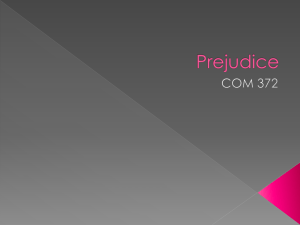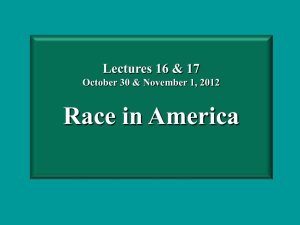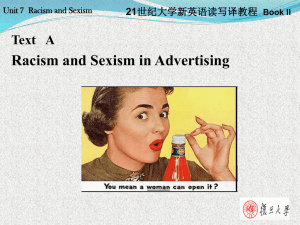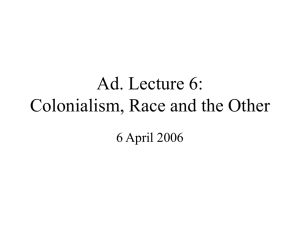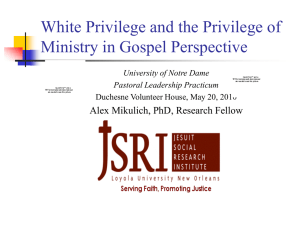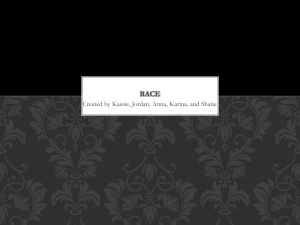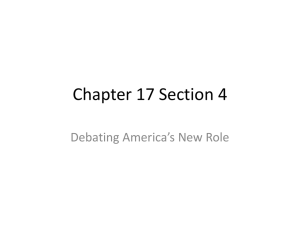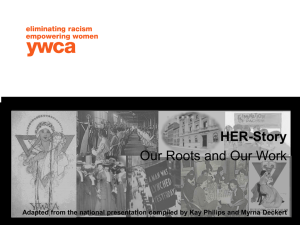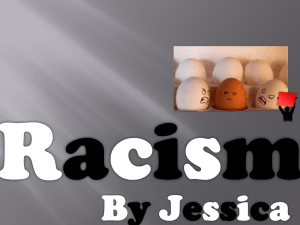Week 9 - MavDISK
advertisement
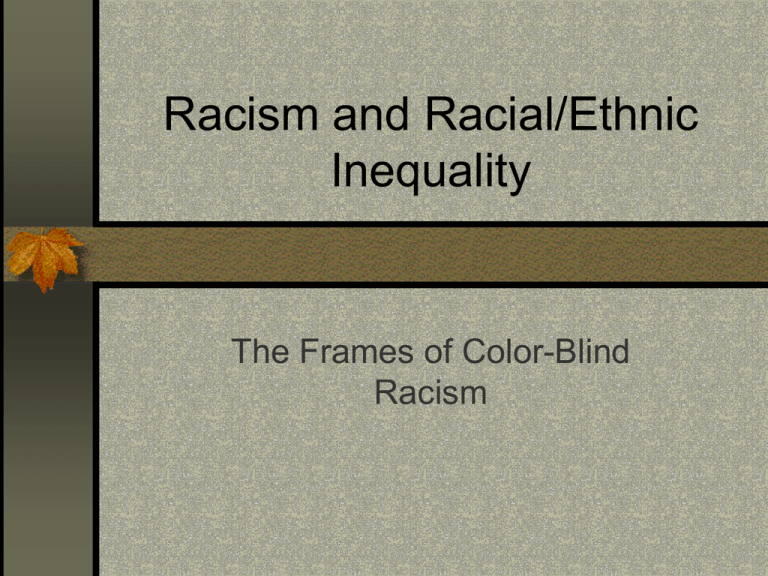
Racism and Racial/Ethnic Inequality The Frames of Color-Blind Racism Inequality Persists Rates of Poverty White (Non-Hispanic) Asian Native Hawaiian and Other Pacific Islander Hispanic origin (any race) Black American Indian and Alaska Native 8.4% 10.9% 12.2% 22% 24.7% 25.3% Structural and Individual Racism Structural Racism is racism that is built into the very institutions of society. Individual Racism is the racist actions and attitudes of individuals. Structural Racism Structural Racism is often hidden in our institutions. Policies and laws disproportionately impact minorities negatively. Education Law Enforcement Individual Racism When we think of racism, we tend to think of individual racism. Racist comments Discrimination in hiring Stereotyping Individual and Structural Racism are Linked Together The actions of racist individuals will add up to impact minorities in general. Health Care Some cases of individual racism are so pervasive that it creates a hostile environment. The Central Frames of Color Blind Racism Abstract Liberalism Naturalization Cultural Racism Minimization of Racism Abstract Liberalism Equal Opportunity “I don't think that they should be provided with unique opportunities. I think that they should have the same opportunities as everyone else. You know, it's up to them to meet the standards and whatever that's required for entrance into universities or whatever. I don't think that just because they're a minority that they should, you know, not meet the requirements, you know.” Abstract Liberalism Meritocracy "I don't know why. Mine was a personal motivation so, you know, I don't know. I don't want to say they weren't personally motivated to get good grades, but that's what it was for me." Abstract Liberalism Limited Role of Government Asked about integrating schools, "I, I don't-I mean, it should be done if people want to do it. If people volunteer for it, and they want that part of their lives, then they should do it, but the government should not force people to bus if they don't want that." Abstract Liberalism Individual Rights “Um, because affirmative action is based on a group as a whole, but when it comes down to the individual, like if affirmative action were against me one time, like it would anger me. I mean, because, you know, I as an individual got ripped off and, you know, getting a job.” Who is more likely to benefit from “Affirmative Action” at Ivy League Schools? Structural Racism - Legacies Legacies constitute a significant proportion of students accepted to universities, especially Ivy league schools (10-15%) according to the Economist http://economist.com/world/na/displayStory.cfm?story_id=3518560 Naturalization Under this frame of Color-Blind Racism, people assume that the differences and segregation is natural. “Well, individuals, its just the way it is. You know, people group together for lots of different reasons: social, religious. Just as animals in the wild, you know. Elephants group together, cheetahs group together. You bus a cheetah into an elephant herd because they should mix? You can't force that [laughs]” Structural Racism Segregation after World War II Federal Housing Authority (FHA) “The FHA underwriters warned that the presence of even one or two non-white families could undermine real estate values in the new suburbs.” Inner-city neighborhoods were destroyed and replaced with “Projects” http://www.pbs.org/race/000_General/000_00-Home.htm Cultural Racism Blames the victim for their “culture of poverty.” “Just from, like, looking at the black people that I've met in my classes and the few that I knew before college, not like they're–I don't want to say waiting for a handout, but to some extent, that's kind of what I'm like hinting at.” History of Structural Racism Responsible for Differences Cultural Racism cannot explain the differences Studies that take into account the family’s economic status find no difference in graduation rates between whites and blacks. Minimization of Racism Racism exists, but it is not as bad as it used to be. “I would say that's a bunch of crap [laughs]. I mean, if they're qualified, they'll hire you and if you are not qualified, then you don't get the job. It's the same way with, once you get the job, if you are qualified for a promotion, you'll get the promotion. It's the same way with white, blacks, Asians, whatever. If you do the job, you'll get the job.” Structural Racism - Hostile Environment eXit Files Robin Morris Collin and others left Eugene, Oregon as a result of discrimination and hostile environments. Ridiculed for success. Subjected to racist comments. Recap Color-blind racism is a form of Ideological Camouflage It justifies the inequality that exists and ignores the history of Structural Discrimination. Whites will claim “reverse discrimination” out of fear that attempts to address inequality will harm them. Racism and Racial/Ethnic Inequality Universities and Hostile Environments Universities and Hostile Environments We will look at some hostile environments that exist on college campuses. Hate Crime at Colorado State Chief Illinewek at the University of Illinois Minorities Don’t Feel Welcome “Native” bumper stickers Rezoning minorities to the edge of town Experiences of discrimination on campus Failure to Meet Minority Goal President Yates explains the inability to meet minority goal results from: City 93% white High academic standards Color-Blind Racism – Abstract Liberalism Dedication to Diversity? I worked for a professor who pushed to address discrimination on campus Contract was not renewed despite her output of books and articles. Hate Crime Real Consequences Dunaway had to look for work covertly. I had to find graduate work elsewhere. Most importantly, students continue to face a hostile, racist environment. Chief Illinewek University of WisconsinLaCrosse Mascot Change UW-LaCrosse wanted to eliminate Indians as its mascot (1989). I decided to write about the mascot change. History of Genocide Chief Black Hawk and his followers were met at the river by an armed steamboat near La Crosse, Wisconsin. Many were massacred as they tried to flee. Arguments regarding Mascot The name was used to honor of the founders of the city. Opposing teams would use slogans like “massacre the Indians” In the film, watch for: Arguments for and against the mascot. How are the arguments for the mascot: Ideological Camouflage? Political Denial? Minimizing Racism? How does the mascot create a hostile environment for Native Americans both at the University of Illinois and on other campuses?
